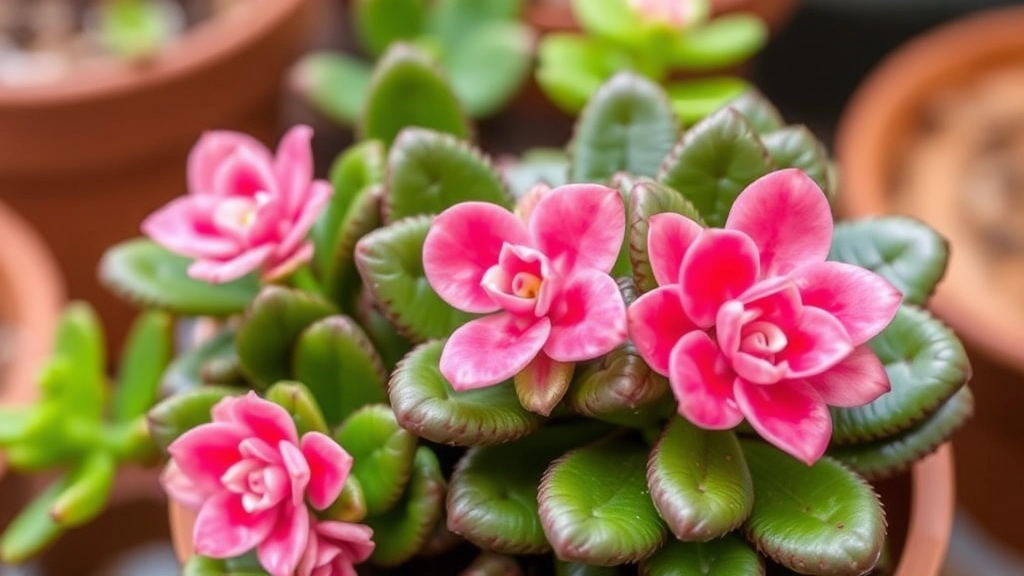Kalanchoe Paddle Plant Care Guide
If you’re diving into Kalanchoe Paddle Plant care, you’ve come to the right place. This unique succulent, known for its striking, paddle-shaped leaves, is a favourite among plant enthusiasts. Let’s break down the essential steps to keep your Kalanchoe thriving and vibrant.
Essential Care Tips
- Light: Ensure your plant gets plenty of bright, indirect sunlight. Direct sun can scorch the leaves, so a spot near a window with filtered light is ideal.
- Watering: These plants prefer dry conditions, so let the soil dry out completely between waterings. Overwatering can lead to root rot, a common issue with succulents.
- Soil: Use a well-draining soil mix to prevent water from sitting at the roots.
Choosing the Right Location for Your Paddle Plant
When considering the placement of your paddle plant, you might be wondering about the ideal conditions it needs to thrive.
Light Exposure
- Paddle plants, or Kalanchoe, prefer bright, indirect sunlight.
- A south or east-facing window is often the best choice.
- Avoid direct sunlight for extended periods, as it can scorch the leaves.
Temperature Considerations
- These plants thrive in temperatures between 20°C to 25°C (68°F to 77°F). For more detailed information, check out the ideal temperature for Kalanchoe Blossfeldiana growth.
- Ensure the location does not experience sudden temperature drops, especially during winter.
Humidity Levels
- Paddle plants are native to arid environments, so they prefer low humidity.
- A dry indoor environment is ideal; avoid placing them in overly humid spaces like bathrooms.
Air Circulation
- Good air circulation is essential for preventing fungal issues.
- Avoid cramped spaces; a little room to breathe can make a big difference.
Accessibility for Care
- Position your paddle plant where it’s easy to reach for watering and maintenance. For more tips on caring for your plant, refer to the ultimate guide to caring for Kalanchoe succulents.
- Consider placing it on a sturdy shelf or table where it can be admired without being in the way.
Soil Requirements for Optimal Growth
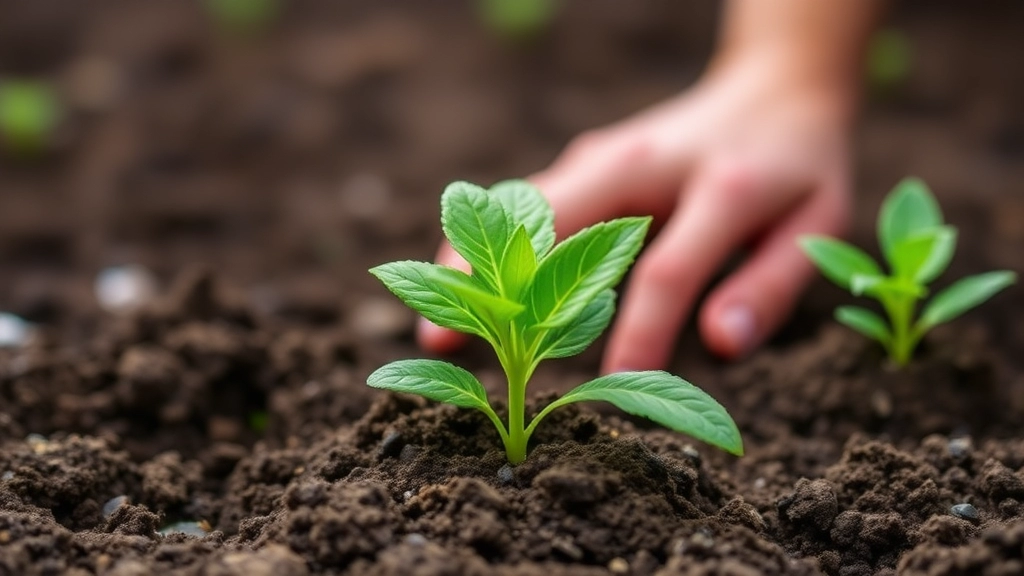
So, you’ve got your Paddle Plant and are ready to help it thrive, but what about the soil?
Choosing the right soil is crucial for your Kalanchoe Paddle Plant to flourish.
Here’s what you need to know:
- Well-Draining Soil: Your Paddle Plant hates soggy roots. Look for a soil mix specifically designed for succulents or cacti. This helps prevent root rot, which is a common issue.
- pH Level: Aim for a slightly acidic to neutral pH (around 6.0 to 7.0). This range is perfect for nutrient absorption.
- Organic Matter: A bit of organic matter can go a long way. Consider mixing in some compost or well-rotted leaf mould to provide essential nutrients.
- Coarse Texture: A gritty mix with sand or perlite will improve drainage. This mimics the plant’s natural habitat, allowing it to breathe and grow strong.
- Avoid Heavy Soil: Stay away from garden soil or potting mixes that retain too much moisture. They can drown your plant faster than you can say “Kalanchoe.”
Quick Tips:
- Use a container with drainage holes.
- Check the soil moisture before watering.
- Repot every couple of years to refresh nutrients.
III. Watering Schedule and Techniques
When it comes to caring for your Kalanchoe Paddle Plant, one of the most common concerns is how much water it truly needs. Overwatering can lead to root rot, while underwatering can stunt growth. Striking the right balance is crucial for optimal health.
Understanding Your Plant’s Needs
- Frequency: Water your paddle plant every 2 to 3 weeks during the growing season (spring and summer). In the dormant season (autumn and winter), reduce watering to once a month.
- Soil Check: Always check the top inch of soil before watering. If it feels dry, it’s time to give your plant a drink.
- Watering Technique: Use room temperature water and ensure it drains out of the pot. This prevents water from pooling at the bottom, which can cause root rot.
Signs of Underwatering and Overwatering
- Underwatering: If the leaves start to shrivel or look wrinkled, your plant may need more water.
- Overwatering: Yellowing leaves or mushy stems are indicators of too much moisture.
Water Quality
Using filtered or rainwater can be beneficial. Tap water containing high levels of chlorine or fluoride may not be ideal for your paddle plant.
Light and Temperature Needs
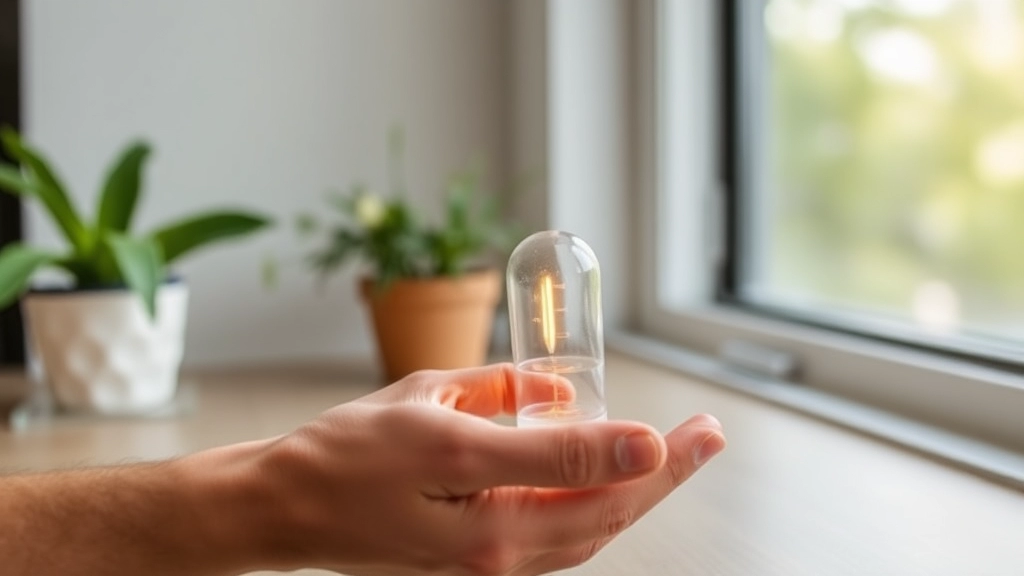
Choosing the right light and temperature for your Kalanchoe paddle plant is essential for its growth and overall health.
Many people wonder: How much light does my paddle plant really need?
Light Requirements
Paddle plants thrive in bright, indirect sunlight. Here are some key points to consider:
- Direct Sunlight: While they can tolerate some direct sunlight, too much can scorch their leaves.
- Indoor Placement: Ideally, place your plant near a south or west-facing window for optimal light exposure.
- Signs of Insufficient Light: If your paddle plant starts to stretch or become leggy, it’s a sign it needs more light.
Temperature Needs
Temperature plays a crucial role in your plant’s well-being. Paddle plants prefer:
- Ideal Range: A temperature range of 20°C to 30°C (68°F to 86°F) is perfect.
- Cold Sensitivity: Avoid temperatures below 10°C (50°F), as this can stress the plant.
- Seasonal Changes: During winter, ensure your plant is not exposed to cold drafts or sudden temperature drops.
V. Fertilizing Your Kalanchoe Paddle Plant
After ensuring that your paddle plant is in the right environment, the next crucial step is fertilization. Many plant enthusiasts often wonder, âHow can I ensure my Kalanchoe Paddle Plant thrives?â
Understanding Fertilizer Needs
Kalanchoe paddle plants benefit from a balanced fertiliser during their growing season, which typically spans spring and summer. Here are some essential tips to consider:
- Frequency: Fertilise every 4-6 weeks during the growing season.
- Type of Fertiliser: A diluted liquid fertiliser formulated for succulents or cacti works best. Look for a balanced NPK ratio (e.g., 10-10-10).
- Dilution: Always dilute the fertiliser to half the recommended strength to prevent root burn.
Signs Your Plant Needs Fertiliser
It’s essential to recognise when your paddle plant might need a nutrient boost. Watch for:
- Slow Growth: If your plant seems to be growing at a snail’s pace, it may be time to fertilise.
- Pale Leaves: A lack of vibrant colour can indicate nutrient deficiency.
- Dropping Leaves: This can also be a sign that your plant isn’t getting enough nourishment.
Application Tips
When applying fertiliser, keep these points in mind:
- Watering First: Always water your plant a day before fertilising. This helps prevent root damage.
- Even Distribution: Ensure the fertiliser is evenly distributed around the base of the plant.
- Avoid Over-fertilising: Less is often more. Over-fertilisation can lead to salt build-up, harming your plant.
For more detailed care and propagation tips, you can refer to our complete guide on caring for Kalanchoe succulents. Additionally, if you notice any white spots on your plant, check out our article on diagnosing and treating Kalanchoe white spots.
### VI. Pruning and Maintenance Tips for Your Paddle Plant
Have you ever looked at your paddle plant and thought it could use a little tidy-up?
Pruning is essential for keeping your Kalanchoe paddle plant healthy and looking its best.
#### Why Prune?
- Promotes Growth: Regular pruning encourages new growth.
- Prevents Overcrowding: It helps maintain airflow, reducing the risk of pests.
- Aesthetic Appeal: A well-pruned plant looks more vibrant and full.
#### When to Prune
- Spring and Summer: This is the best time to prune as your plant is actively growing.
- After Flowering: If your paddle plant has bloomed, a little trim can help rejuvenate it.
#### How to Prune
- Use Clean, Sharp Tools: Always start with sterilised scissors or pruning shears.
- Cut at the Base: Trim stems close to the base, taking care not to damage the main plant.
- Remove Dead or Yellow Leaves: Snip these away to keep your plant healthy.
#### Maintenance Tips
- Dust the Leaves: Wipe them down occasionally to keep them clean and able to photosynthesize effectively.
- Check for Pests: Regularly inspect for any signs of pests like mealybugs or aphids. Catching them early can save you a lot of hassle.
- Adjust Light Exposure: If you notice leggy growth, it might be time to reposition your plant to get more sunlight.
Repotting your Kalanchoe Paddle Plant can seem daunting, but it’s essential for its health and growth. You might be asking yourself, “When is the right time to repot?” or “How do I know if my plant needs a new pot?” Let’s break it down.
### When to Repot
**Signs Your Plant Needs Repotting:**
– Roots are growing out of the drainage holes.
– The plant is top-heavy and tipping over.
– Soil dries out too quickly after watering.
– You notice stunted growth.
The best time to repot is during the spring or early summer when the plant is actively growing. This ensures it can recover quickly from the shock of being moved.
### Choosing the Right Pot
**Pot Size:**
– Select a pot that is 1-2 inches larger in diameter than the current one.
**Material:**
– Terracotta pots are excellent for drainage, while plastic pots retain moisture.
### Soil Selection
– Use a well-draining cactus or succulent mix. You can also create your own by mixing:
– 50% potting soil
– 25% perlite
– 25% sand
This combination promotes aeration and prevents root rot.
### The Repotting Process
1. **Prepare the New Pot:**
– Ensure it has drainage holes.
– Add a layer of fresh soil at the bottom.
2. **Remove the Plant:**
– Gently squeeze the sides of the old pot to loosen the soil.
– Carefully pull out the plant, holding it by the base.
3. **Inspect the Roots:**
– Trim any dead or rotting roots with clean scissors.
– This helps to promote healthy growth.
4. **Place the Plant in the New Pot:**
– Position it in the center and fill around the sides with fresh soil.
– Ensure the top of the root ball is level with the soil surface.
5. **Water Thoroughly:**
– After repotting, give the plant a good drink.
– Allow excess water to drain out completely.
### Post-Repotting Care
– Keep the plant in a shaded area for a week to help it adjust.
– Avoid fertilizing for at least a month to prevent stress.
Repotting can breathe new life into your Kalanchoe Paddle Plant, ensuring it continues to thrive. For more detailed care tips, you might find our [ultimate guide to growing and caring for succulent plant Kalanchoe](https://planthq.org/ultimate-guide-to-growing-and-caring-for-succulent-plant-kalanchoe/) and [flapjack Kalanchoe care guide](https://planthq.org/flapjack-kalanchoe-care-ultimate-guide-for-healthy-growth/) helpful.
Common Pests and Diseases
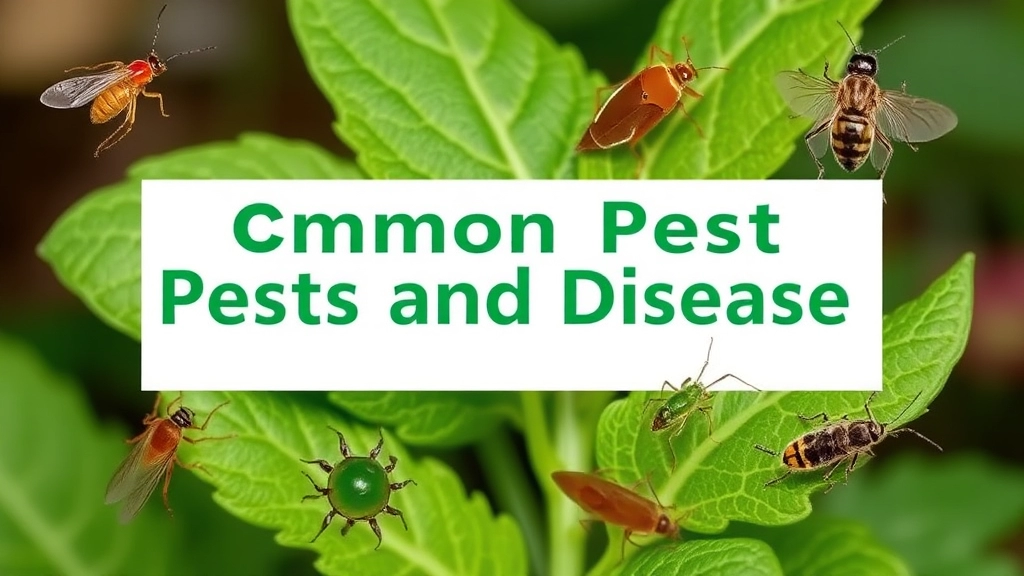
So, you’ve got your paddle plant thriving, but wait—what’s that? Pests and diseases can sneak up on even the most seasoned plant parents.
What to Watch For
- Mealybugs: These little white cottony bugs love to hide in the leaf joints.
- Spider Mites: Tiny and tricky, they can cause yellow spots on leaves.
- Aphids: These green or black critters suck the sap from your plant.
- Fungal Issues: Look out for black spots or mushy leaves, often a sign of overwatering.
Prevention Tips
- Keep It Clean: Wipe down leaves with a damp cloth to remove dust and potential pests.
- Proper Watering: Avoid soggy soil; it can lead to root rot and fungal issues.
- Good Airflow: Ensure your plant isn’t cramped; good ventilation can deter pests.
Treatment Options
- Neem Oil: A natural remedy that works wonders on pests.
- Insecticidal Soap: Spray this on affected areas to eliminate bugs.
- Isolate: If you spot a pest, move the plant away from others to prevent spreading.
Signs of Trouble
- Wilting Leaves: Could indicate a pest problem or overwatering.
- Stunted Growth: If your paddle plant isn’t growing as expected, check for pests or diseases.
When it comes to expanding your collection of Kalanchoe paddle plants, understanding propagation methods is essential. Many enthusiasts wonder, “How can I easily grow more of these beautiful succulents?” Let’s explore some straightforward techniques that can help you multiply your paddle plants effectively.
One of the most popular methods for propagating paddle plants is through leaf cuttings. Here’s how to do it:
– **Choose a Healthy Leaf:** Select a mature, healthy leaf from the parent plant.
– **Cut the Leaf:** Use a clean, sharp knife to cut the leaf at the base.
– **Let it Callous:** Allow the cut end to dry and callous for a few days. This helps prevent rot.
– **Plant the Leaf:** Place the calloused end in well-draining soil, burying it just slightly.
– **Water Sparingly:** Mist the soil lightly and avoid overwatering.
Kalanchoe paddle plants often produce offsets or âpupsâ around the base. These can be easily removed and replanted:
– **Identify Offsets:** Look for small plants sprouting from the base of the main plant.
– **Remove Carefully:** Gently twist or cut the offset away from the parent plant.
– **Let it Callous:** Just like with leaf cuttings, let the cut end dry for a few days.
– **Replant:** Plant the offset in fresh, well-draining soil.
Another effective method is using stem cuttings:
– **Select a Healthy Stem:** Choose a healthy stem and cut it with a sharp knife.
– **Prepare the Cutting:** Remove the lower leaves to expose the stem.
– **Callous Time:** Allow the cut end to dry for a few days.
– **Plant in Soil:** Insert the cut end into well-draining soil.
– **Water Lightly:** Mist the soil and keep it lightly moist.
By following these propagation methods, you can easily grow new Kalanchoe paddle plants to enjoy or share. For more detailed instructions on leaf propagation, you can refer to the [step-by-step guide for Kalanchoe leaf propagation](https://planthq.org/kalanchoe-leaf-propagation-stepbystep-guide/). Additionally, if you are looking to expand your collection further, consider exploring the [varieties and growing tips for blue Kalanchoe flowers](https://planthq.org/blue-kalanchoe-flower-care-varieties-and-growing-tips/).
Seasonal Care Tips for Your Paddle Plant
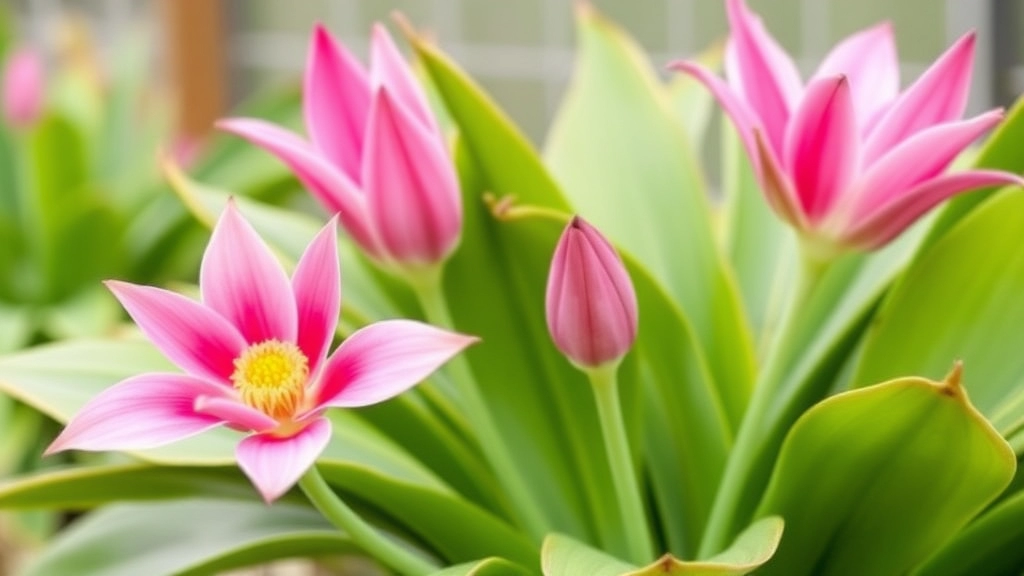
Now that we’ve covered the essentials of caring for your paddle plant, let’s dive into how to adjust your care routine with the changing seasons.
Spring: Awakening Growth
As spring rolls in, your paddle plant will start to wake up and grow more actively.
- Increase Watering: As temperatures rise, your plant will need more water. Just ensure the soil dries out between waterings.
- Repotting Time: If you’ve been thinking about repotting, spring is the perfect time. Fresh soil can give your plant a boost.
- Fertilize: Start a light fertilizing schedule to support new growth. A balanced, water-soluble fertiliser works wonders.
Summer: Peak Growth
Summer is when your paddle plant really shines.
- Keep it Cool: If it’s sweltering, provide some shade during the hottest part of the day. A bit of afternoon shade can prevent leaf burn.
- Regular Watering: Keep an eye on the moisture levels. Hot weather means more frequent watering, but don’t drown it!
- Pest Patrol: Check for pests regularly. They tend to be more active in warmer months.
Autumn: Preparing for Rest
As the days get shorter and cooler, your paddle plant will slow down.
- Reduce Watering: Cut back on watering as growth slows. Let the soil dry out more between waterings.
- Stop Fertilizing: It’s time to halt fertilisation. Your plant doesn’t need the extra nutrients as it prepares for dormancy.
- Prune if Necessary: If you see any dead leaves, now’s a good time to tidy up.
Winter: Dormancy Mode
Winter can be tough for our green friends, but with the right care, your paddle plant can thrive.
- Low Watering: Your plant will need very little water during this time. Just enough to keep it from completely drying out.
- Light Check: Make sure it’s getting enough light. If it’s not, consider moving it closer to a window.
- Temperature Awareness: Keep it away from drafts and heating vents. It prefers a stable, warm environment.
Troubleshooting Common Issues
As we delve deeper into caring for your Kalanchoe paddle plant, it’s important to address some common challenges that may arise.
Are your leaves turning yellow? Is your paddle plant stretching towards the light? These are just a couple of issues that can affect the health and appearance of your beloved succulent. Let’s explore some of the most frequent problems and how to tackle them effectively.
Enhancing Aesthetic Appeal in Your Home
So, you’ve got your Kalanchoe paddle plant thriving, and now you’re wondering how to make it a standout feature in your home.
Let’s face it, we all want our spaces to feel warm and inviting, right? Here are some simple yet effective ways to elevate the aesthetic appeal of your paddle plant:
1. Choosing the Right Pot
- Material Matters: Opt for ceramic or terracotta pots for a classic look.
- Size It Right: Make sure the pot isn’t too big; it should snugly fit your plant.
- Add Texture: Consider textured pots to add depth to your decor.
2. Strategic Placement
- Natural Light: Position your paddle plant where it can soak up the sunlight, like a windowsill or a bright corner.
- Height Variation: Use plant stands or hangers to create varying heights, making your plant a focal point.
- Group It Up: Pair it with other plants for a mini indoor garden vibe.
3. Decorative Elements
- Layer with Stones: Add decorative stones on top of the soil for a polished look.
- Incorporate Accessories: Think about adding small figurines or fairy lights around the pot for a whimsical touch.
- Seasonal Decor: Change the surrounding decor with the seasonsâthink autumn leaves or festive ornaments.
4. Colour Coordination
- Match Your Decor: Choose pots that complement your room’s colour scheme.
- Bold vs. Subtle: If your space is neutral, go for a bright pot. If it’s already vibrant, stick to more muted tones.
5. Creating a Theme
- Bohemian Vibes: Mix your paddle plant with macramé hangers and eclectic decor.
- Minimalist Approach: Keep it simple with a sleek pot and a clean background.
By enhancing the aesthetic appeal of your Kalanchoe paddle plant, you not only beautify your space but also create an inviting atmosphere. For more tips on how to care for your Kalanchoe, check out our care tips for maximizing longevity. If you’re interested in expanding your collection, consider adding a Kalanchoe Pink Butterflies to your indoor garden.
FAQs on Kalanchoe Paddle Plant Care
What type of soil is best for a Kalanchoe Paddle Plant?
For optimal growth, use well-draining soil designed for succulents or cacti. Ensure the soil has a slightly acidic to neutral pH (around 6.0 to 7.0) and includes organic matter for nutrient absorption. Avoid heavy soils that retain too much moisture.
How much light does a Kalanchoe Paddle Plant need?
Paddle plants thrive in bright, indirect sunlight. They can tolerate some direct sunlight but too much can scorch their leaves. For indoor placement, a south or west-facing window is ideal.
What is the ideal temperature range for a Kalanchoe Paddle Plant?
The ideal temperature range is between 20°C to 30°C (68°F to 86°F). Avoid temperatures below 10°C (50°F) to prevent stress on the plant.
When and how should I prune my Kalanchoe Paddle Plant?
Prune your plant during spring and summer when it is actively growing. Use clean, sharp tools to trim stems close to the base and remove dead or yellow leaves. Regular pruning promotes growth, prevents overcrowding, and enhances aesthetic appeal.
What are common pests and diseases that affect Kalanchoe Paddle Plants?
Common pests include mealybugs, spider mites, and aphids. Fungal issues can also occur due to overwatering. Keep an eye out for signs of trouble like wilting leaves or stunted growth.
How can I prevent and treat pest infestations on my Kalanchoe Paddle Plant?
Prevent pests by keeping the plant clean, ensuring proper watering, and maintaining good airflow. For treatment, use neem oil or insecticidal soap and isolate affected plants to prevent spreading.
How should I adjust care for my Kalanchoe Paddle Plant with changing seasons?
- Spring: Increase watering, consider repotting, and start light fertilizing.
- Summer: Provide shade during hot parts of the day, water regularly, and check for pests.
- Autumn: Reduce watering, stop fertilizing, and prune dead leaves.
- Winter: Water sparingly, ensure adequate light, and keep away from drafts and heating vents.
References
-
Kalanchoe Paddle Plant Care Tips – The Spruce
-
How to Grow and Care for Kalanchoe Paddle Plant – Gardening Know How
-
Kalanchoe Thyrsiflora (Paddle Plant) Care Guide – House Plants Expert
